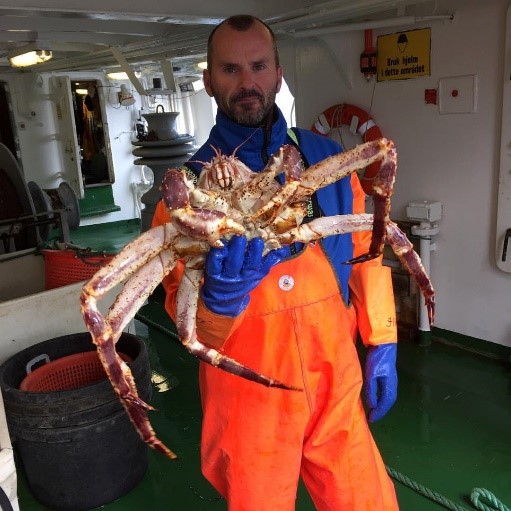What scientific topics do we work with?

A goldsinney wrasse ready for sampling
Fotograf: Eeva JanssonGenetic and ecological interactions between farmed escapees and wild conspecifics
Farmed escapees and genetic interactions with wild conspecifics represents a persistent and major challenge to an environmentally-sustainable aquaculture industry. An overview of current knowledge was recently published in a comprehensive review article in Fish and Fisheries 1. The group has had a long-term and diverse research profile in this field, including examples such as: common-garden experiments to elucidate the genetic and genomic differences between domesticated and wild salmon 2-9, quantifying patterns of introgression of farmed escapes in natural populations 10-13, behavioral studies to understand the movements of farmed escapees 14-17, field experiments with domesticated and wild salmon 18,19, and genomics approaches to quantify differences 20-22. The group also lead the National Monitoring Program for quantification of farmed escapees in the natural environment 23, and has published multi-disciplinary studies on the ecological profile of escapees entering rivers 24,25. This field remains as a major part of the groups research profile.
Population genetic (genomic) structure and function
The group has a long history of using molecular genetic methods to study connectivity among populations of fish and other organisms in the marine environment. This has ranged from some of the smallest (e.g., copepods) to the largest (whales) animals in our seas. Many of these studies have been designed to address important fisheries management questions, while others have tried to identify important mechanisms maintaining genetic structure, such as bathymetric and seascape features, oceanic currents and geographic distances. One of the species that has been most intensely studied by the group over several decades is the Atlantic cod 26-41. Population genetic studies have also covered a wide range of species including: European hake 42, grenadier 43,44, redfish 45-50, coalfish 51, Greenland halibut 52,53, tusk 54,55, ling 56, ballan wrasse 57,58, goldsinny wrasse 59,60, corkwing wrasse 31,61, shrimps 62,63, sea lice 64,65, Atlantic salmon 10,11,66, residential and anadromous brown trout 67-70, minke whales 71, portoguese dogfish 72, and European lobsters 73-75. In addition, there are ongoing efforts to map the population genetic structure of a number of previously unstudied or poorly studied species. This remains as a major part of the groups project portfolio and is using to an ever-increasing degree genomics tools to provide greater clarity to the scientific questions at hand 33,65,76.

Photo: Jon Ivar Westgard
Marine Protected Areas (MPAs): development, function and evaluation
Genetic, ecological and behavioral methods have been combined in multi-disciplinary studies to evaluate MPAs. Much of this work has occurred in the south of Norway on cod and lobster where dwindling wild populations and high levels of anthropogenic pressure has led to increased focus on MPAs as a way of conservation 73,77-80. Some of this work have led to innovative thoughts regarding the function of MPAs, such as how protection-induced selection and contemporary evolution could fundamentally alter our perspective on MPA function 81.
Ecological and opportunistic studies
Not all of the group´s research activities are directly related to population genetics, and a range of ecological and opportunistic studies have and continue to be managed by the group. Some of these of course overlap with evolutionary questions where genetics tools have been implemented or will to an increasing degree be implemented in the future. Some of these studies are also related to investigating the genetic differences among populations using experimental rather than population genetics approaches. These highly diverse group of studies include examples such as investigating susceptibility of various populations to infection with the salmon louse including computation of heritability 82-84, identification of unintentional spontaneous triploidy in farmed populations 85,86, determining how the third set of chromosomes influences the phenotype of triploid salmon 8, investigating the role of sea lice on marine mortality of Atlantic salmon and anadromous brown trout populations 87-89, investigations of evolutionary fishing pressure on a salmon population 90, quantification of fitness differences among sea lice families in response to chemical and environmental stressors 91, telemetry studies to track fish movements and behavior in relation to various environmental factors for example sea temperature 15,92-94, tank behavioral studies 5, developmental deformities such as conjoined twin development in salmonids 95, identification of resistance development and dispersal mechanisms in parasites 65.
Publisert: 29.12.2017
